When developing a game, it's best to not remind the audience of something better, since it can magnify flaws and lessen strengths. Unfortunately, Akiba's Beat completely fails at this. Every moment of the game reminds you of a better game, whether it's Persona, the Tales of franchise, Tokyo Mirage Sessions, or its own spiritual predecessor, Akiba's Trip. The game doesn't stand very well on its own and does far worse when compared to similar titles.
Akiba's Beat follows the story of the unambitious layabout, Asahi Tachibana. He's a geek who's happy to be unemployed, watch anime and play games. His life is derailed when he runs into a girl and her floating pet creature. He's dragged with her into a delusion, an alternate space made of someone's personal issues, where he discovers that he has access to amazing powers that allow him to fight and destroy these delusions. This discovery also comes at a cost: He's stuck repeating the Sunday when he discovered his powers. He has to clear the geek mecca of Akihabara of its delusions if he wants to watch the next episode of his favorite anime.
The plot in Akiba's Beat's is boring and only saved by a great localization. Fair or not, when compared to the near-identical plots in some of Atlus' recent games, it comes up wanting in every way. The characters aren't interesting, and the plot points are predictable. To make matters worse, it's also repetitive, and the "groundhog day" concept doesn't help. It takes the characters way too long to figure out what players likely knew in the first few minutes. The only thing that makes it enjoyable is the charming and cheerful localization. It clearly takes some liberties in the name of humor, but that works since the game is silly to begin with. I'm not sure it works quite as well as the wonderful translation in Akiba's Trip, but it's the high point of the game. It's XSEED's strong work that elevates the game.
Akiba's Beat attempts to use the idea of being in the center of Akihabara as an excuse for a small and bland environment, but unfortunately, it rings false. The Akihabara in Beat is infinitely worse than the exact same area in Akiba's Trip. Rather than feeling like a trip to a real place, it feels like a weird, empty segment of a city with fake shops. The Akihabara in Trip was one of the highlights of the game, but here, it feels like a waste of time. It takes too long to traverse even with the fast travel option, but it doesn't feel like a thriving place.
There are plenty of JRPGs with dull environments but rarely as localized as Akiba's Beat, and it really does hurt the game. There are ways to take small environments and use them to your advantage. The recently released Yakuza 0 has areas about as big as Beat, but it makes use of detail and style to make them feel like places instead of confinements. I kept desperately wanting Akiba's Beat to give me more, but it never did. Once you can go into shops, they're just menus without any personality. It's difficult to ignore how little energy Akihabara has in a game that's all about Akihabara's vitality. Akiba's Trip managed to pull it off, so it's surprising that its successor doesn't. The connection between the two titles seems to be in name only. For all of Trip's flaws, its version of Akihabara had much more personality than Beat ever manages.
Of course, a good chunk of your time is spent on fighting delusions, but they're not interesting dungeons, either. They're generally empty mazes, and the dungeons aren't randomly generated. Enemies appear on the battlefield, and you can attack them first to get a small combat bonus. There are treasure chests and multiple paths to explore, so the dungeons feel relatively meaty, but it takes a while for them to get past the tutorial phase, so they never get exciting.
Combat is identical to Tales of combat, but it lacks any of the significant style and improvements of the Tales franchise, and it feels like something from the PS2 era. It's probably the most blatant knockoff of another game's combat system I've seen since Lord of the Rings: The Third Age. It's an action-based combat system where you have multiple party members in battle, and you only control one at a time. There's an attack button, but you're limited by Action Points, which regenerate after a few moments of not attacking. You can also block and dodge attacks, and you can use special moves, which drain skill points that are refilled via items or by attacking enemies. You unlock new moves, which can offer different combos and swap characters on the fly, but only a handful of characters are fun to play.
The most interesting part of the combat system isn't particularly distinct, but it feels stylish. As you fight, you build up an Imagine Field, and once it reaches the halfway point, you can activate it to briefly power up your attacks. When the Imagine Field is full, you can activate it, and a vocal theme song begins to play. During this theme song, you gain infinite AP, get more powerful, and build up combo strings. Once you hit the chorus, the combo bonus is added to your damage, and you do insane amounts of damage. Time it correctly, and you can obliterate bosses with it.
The Imagine Field is cool as a concept, so you have a reason to activate the thematic "vocal song kicks in, heroes start kicking butt" thing that you see in a lot of games. You can even unlock different songs with different attributes, so you can choose your favorite. The only downside is that it's possibly too powerful. Boss battles boil down to building up and activating the Imagine Field. The damage increase is so huge that it can overwhelm everything else. It makes everything else you do in combat feel rather meaningless.
Akiba's Beat isn't a very impressive-looking game. The character models are simplistic, and almost every cut scene is told through static character portraits. There's not even a variety to them, as seen in older Persona titles, but you see the same floating image regardless of thought or emotion. As mentioned, the environments are bland and don't feel lively. The soundtrack isn't particularly memorable, aside from the clever use of the vocal theme songs. The game offers both Japanese and English dubs. In this case, I preferred the dub. The acting is solid and full of charmingly well-done acting that provides some much-needed vitality.
Ultimately, Akiba's Beat is a poor sequel, a weak homage, and a lackluster game. The strong localization elevates it slightly, but it's crippled by its attempts to impersonate better games. With Persona 5 and Tales of Berseria still fresh on the shelves, it's hard to justify why you'd play this over those games, and once you do, you'll find it difficult to stop noticing the game's "me too" trait. It's not the worst JRPG on the market by any means, but it has very little going for it in terms of strengths. The humor hit enough to give the experience some value, but otherwise it's something for those who've burned through the other top-notch JRPGs on the PS4 and are desperate for a little more.
Score: 6.5/10
More articles about Akiba's Beat


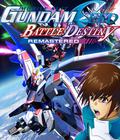
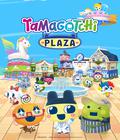
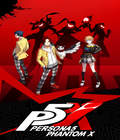
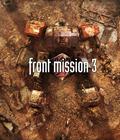
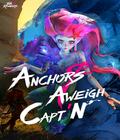
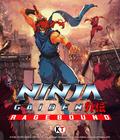
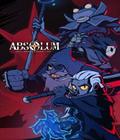
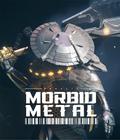

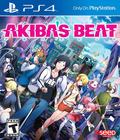 Set in a true-to-life recreation of Tokyo’s Akihabara ward, players will take control of a party of characters led by protagonist Asahi Tachibana as they seek to rid the town of anything out of sync with reality.
Set in a true-to-life recreation of Tokyo’s Akihabara ward, players will take control of a party of characters led by protagonist Asahi Tachibana as they seek to rid the town of anything out of sync with reality.




























